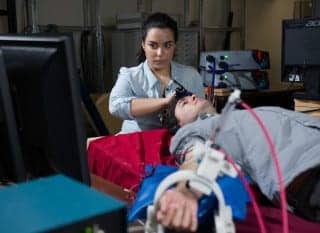A new mechanical device developed by researchers at the Georgia Institute of Technology is designed to aid stroke patients with the repetitive facilitation exercise (RFE), a rehabilitation tactic for stroke survivors to attempt to regain wrist movement. With RFE, patients are asked to think about moving the wrist while a practitioner flexes the wrist. The goal is to send a long latency response from the stretch that arrives in the brain at the exact time the thought happens, creating a neural signal, according to a Georgia Institute of Technology (Georgia Tech) news release.
The intended result is a string response that zips back to the forearm muscles and moves the wrist. However, Lauren Lacey of Georgia Tech, explains, “Timing is everything. When the window is that small, it’s not easy for two people to match each other.” As such, Lacey and a team of Georgia Tech researchers created a mechanical device that is aims to take people out of the process and replace them with computers. The Georgia Tech news release notes that their functional MRI-compatible hemiparesis rehab device creates a long latency stretch reflex at the exact time as a brain signal.
Minoru Shinohara, PhD, FACSM, says, “It’s kind of like trying to fill a bucket with water. Stroke individuals can only mentally fill it halfway. The machine pours in the rest to make it full.” Presently, the research team has worked only with healthy individuals in their study. The participants lie on a bed with the arm extended beneath a pneumatic actuator tendon hammer. In order to stimulate the signal created by hemiparesis patients to move their wrist, transcranial magnetic stimulator (TMS) is placed on the heads of these healthy individuals at a 45-degree angle.
After the hammer taps the tendon of the wrist, the TMS creates a weak signal in the motor cortex, and the responses overlap and produce and send a signal back to the arm. The wrist then moves. The Georgia Tech news release notes that the researchers have successfully varied the timing of the TMS signal and speed of the hammer to strike faster or slower depending on how much of a boost is needed to complement the brain signal.
Now having proven the viability of the TMS-actuator system, the research team will next work with stroke patients. Jun Ueda, PhD, states, “Once we fully understand what is happening mentally and physiologically, we should be able to create a robot that can reproduce successful rehabilitative exercises such as RFE.” Ueda adds, “It appears that the timing is the critical piece of this exercise. Robots are great at timing, so the results are very promising for robotics.”
Photo Appears Courtesy of Georgia Tech
[Source: Georgia Institute of Technology]





